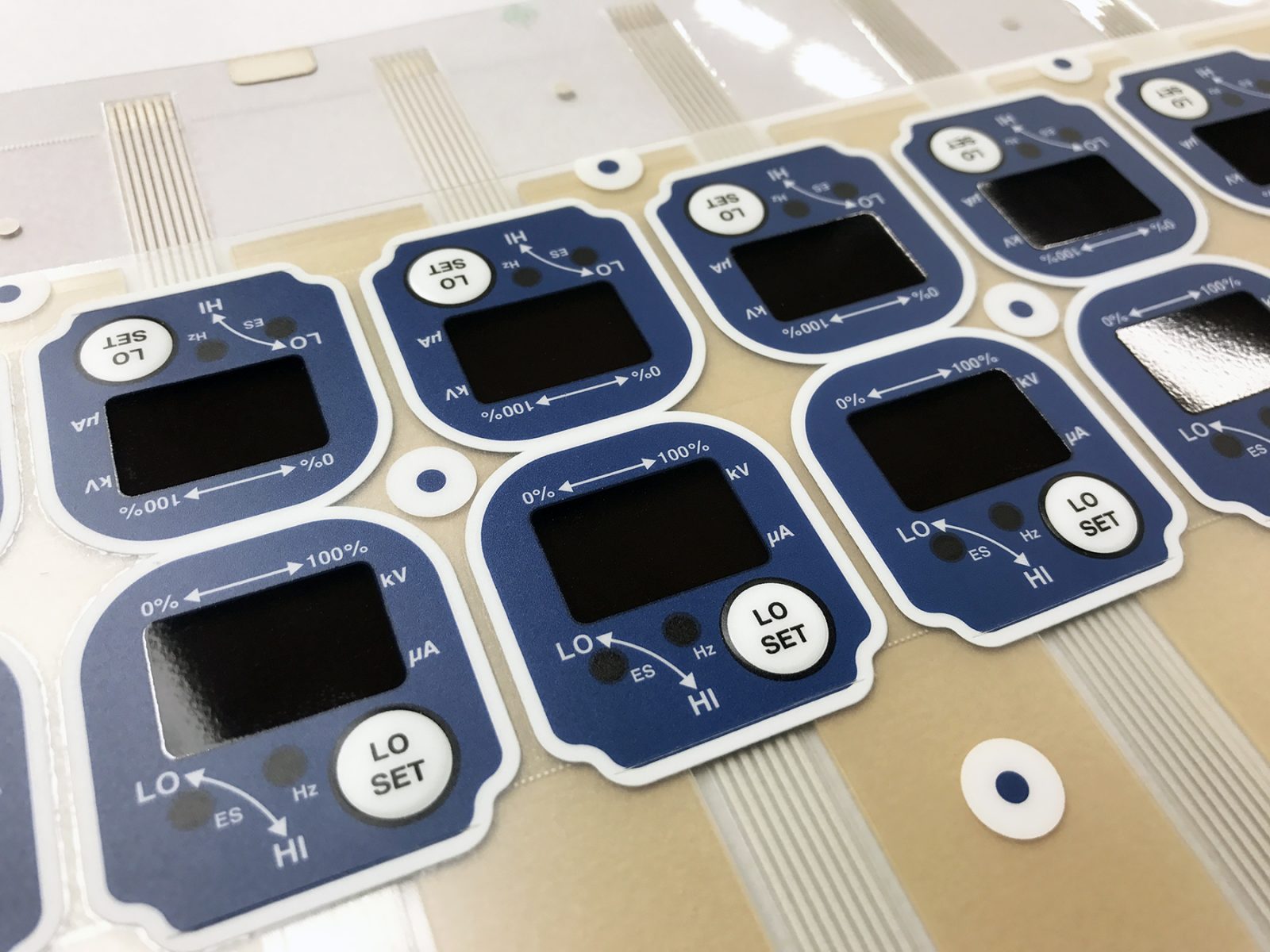Vital Functions to Search For When Selecting a Membrane Switch
Vital Functions to Search For When Selecting a Membrane Switch
Blog Article
Just How Membrane Layer Switches Add To the Sturdiness of Electronic Control Panels
Membrane switches play a crucial duty in boosting the toughness of electronic control panels, mostly with their multi-layered building which supplies reliable protection against environmental factors such as dampness and dirt. The lack of relocating parts dramatically minimizes the possibility of mechanical failures, making membrane switches over suitable for requiring applications.
Definition of Membrane Switches

Membrane buttons are created to be thin and lightweight, making them appropriate for applications where area is limited. They can be manufactured in different shapes, sizes, and shades, supplying versatility in layout that fulfills visual and useful demands. Additionally, membrane switches can incorporate numerous modern technologies, such as responsive feedback and LED signs, boosting user experience.
Because of their building, membrane layer switches are commonly resistant to dust, dampness, and general wear, adding to their sturdiness sought after environments. Their seamless style not only promotes easy cleansing but also lessens the risk of mechanical failing, making them a recommended option for manufacturers seeking reliable interface in their electronic control panels.
Security Versus Ecological Elements
The layout of membrane changes naturally provides a degree of protection versus numerous environmental aspects, which is essential for keeping functionality in challenging problems - Membrane Switch. These buttons are commonly built with layers of flexible products that protect internal parts from wetness, dust, and impurities. By enveloping the wiring, membrane switches lessen the risk of brief circuits and rust, which can dramatically hinder efficiency
Additionally, using durable adhesives and sealants during production improves their resistance to environmental obstacles. Membrane switches can withstand direct exposure to chemicals and solvents, making them appropriate for sectors such as food processing and medical care, where hygiene and sanitation are paramount. Their smooth surface style additionally stops the buildup of dirt and bacteria, helping with less complicated cleaning and upkeep.
Temperature level variations are an additional environmental worry, and membrane switches are crafted to operate effectively throughout a large range of temperature levels (Membrane Switch). This adaptability guarantees that control panels remain functional in different setups, from industrial environments to customer electronic devices
Effect On Individual Communication
Customer interaction with electronic control panels is considerably affected by the layout and functionality of membrane switches. These buttons provide a responsive user interface that boosts the overall user experience, permitting user-friendly navigating and control. Their receptive nature ensures that users receive instant comments upon activation, which is vital for jobs needing precision and effectiveness.
Additionally, the smooth surface area of membrane layer switches assists in simple cleansing and upkeep, promoting user self-confidence in the integrity of the interface. This cleanliness is particularly vital in environments where hygiene is vital, such as clinical or food handling setups. In addition, the portable and light-weight style of membrane changes adds to the aesthetic allure of control board, urging user involvement through a modern-day and smooth look.
Moreover, the integration of aesthetic elements, such as published symbols and backlighting, assists users promptly recognize functions, minimizing the discovering curve related to brand-new devices. As a result, users can run gadgets much more efficiently, resulting in increased efficiency and contentment. In recap, membrane layer switches play a crucial function visit this page in boosting individual communication by incorporating performance, looks, and ease of usage, ultimately leading to enhanced operational performance.
Design Flexibility and Modification
Design versatility and modification are vital facets of membrane layer switches, making it possible for manufacturers to tailor electronic control board to specific applications and user demands. This adaptability permits the integration of different design elements, such as colors, graphics, and appearances, which can improve the aesthetic allure and user engagement of the control board.
Membrane switches can be customized in dimension and shape, fitting a broad variety of devices and applications, from industrial machinery to why not try these out customer electronic devices. This adaptability ensures that producers can produce intuitive interfaces that straighten with individual expectations and operational demands. Furthermore, the capability to include unique features such as backlighting or tactile comments further enhances use, enabling a much more interactive experience.
Moreover, the manufacturing procedure for membrane layer changes sustains the rapid prototyping of designs, enabling manufacturers to repeat and refine their ideas quickly. This capability not just accelerates the growth timeline but also makes certain that the end product meets certain functional and aesthetic standards.

Cost-Effectiveness and Long Life
Cost-effectiveness and longevity are considerable advantages of membrane layer buttons, making them an appealing option for manufacturers and end-users alike. These buttons are typically cheaper to produce than conventional mechanical switches, largely because of their simplified production processes and the minimized variety of elements called for. This price advantage prolongs not just to initial production but additionally to lasting functional expenses, as membrane buttons commonly need less maintenance and have a lower failure price.
In addition, the longevity of membrane layer switches contributes to their overall value. Constructed from durable products, they are immune to ecological factors such as dampness, dust, and chemicals, which can result in premature wear in other button kinds. The lack of moving parts lessens mechanical failing, allowing membrane layer switches to maintain functionality over extended periods.
This longevity is specifically helpful in applications requiring consistent performance under demanding conditions, such as medical gadgets and commercial equipment. Eventually, the learn the facts here now combination of cost-effectiveness and longevity makes membrane layer switches over an economically sensible selection for manufacturers, offering trustworthy remedies that endure the test of time while optimizing budgetary considerations.
Final Thought
In final thought, membrane switches significantly enhance the durability of electronic control panels via their robust building and protective features - Membrane Switch. On the whole, membrane layer switches represent a dependable and cost-efficient selection for enhancing the long life and functionality of electronic control systems.
Report this page